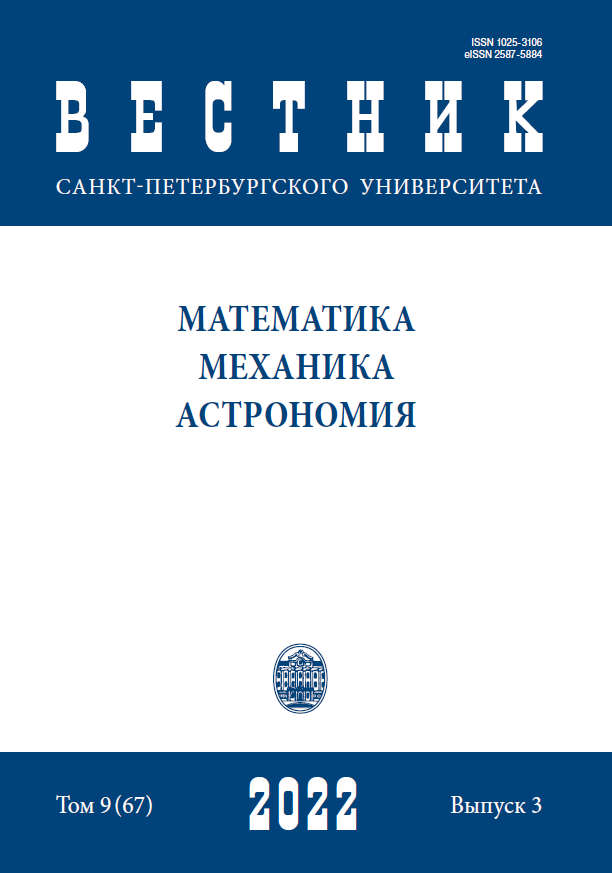On integral equations of cracks of a new type
DOI:
https://doi.org/10.21638/spbu01.2022.302Abstract
For the first time, the paper develops a new type of crack modeling method that allows describing them in environments of complex rheologies. It is based on a new universal modeling method previously published by the authors, used in boundary value problems for systems of partial differential equations. The advantage of the method is the possibility of avoiding the need to solve complex boundary value problems for systems of partial differential equations by replacing them with separate differential equations, among which the Helmholtz equations are the simplest. Namely, with the help of combinations of solutions of boundary value problems for this equation, it is possible to describe the behavior of complex solutions of multicomponent boundary value problems. In this paper, for the first time, the method is applied to a mixed boundary value problem for cracks of a new type. Cracks of a new type, complementing the Griffiths cracks, were discovered during the study of fractures of lithospheric plates that converge at the ends during oncoming traffic along the Conrad boundary. In the course of the study, Kirchhoff plates were adopted as models of lithospheric plates. The method developed in the published article is aimed at the possibility of describing models of approaching objects similar to lithospheric plates in the form of deformable plates of more complex rheologies. In particular, it can be thermoelectroelastic plates or other rheology. In the process of solving problems using Kirchhoff models for lithospheric plates, there was a problem of calculating some functionals that needed to be determined. This method demonstrates an approach that eliminates this drawback. The derivation of integral equations of cracks of a new type, the method of their solution and the approach to application in more complex rheologies is given.Keywords:
lock element, factorization, integral equations, external forms, cracks of a new type
Downloads
References
Литература
References
Downloads
Published
How to Cite
Issue
Section
License
Articles of "Vestnik of Saint Petersburg University. Mathematics. Mechanics. Astronomy" are open access distributed under the terms of the License Agreement with Saint Petersburg State University, which permits to the authors unrestricted distribution and self-archiving free of charge.




